I knew exactly what I was looking for as I flipped through the carts of children’s books lined up in a hallway outside the abandoned school library. I wondered if there were any books with African American children as subjects.
I was attending an auction of books, equipment, maps, chairs and just about anything else education-related at an elementary school that had closed. The auction was one of several sponsored by a local school district a few years ago.
I didn’t see much as I perused the stacks of books, my eyes gliding over the spines on the carts as well as the covers of some books lying flat on the floor. Then I came upon a grimy book whose edges and spines were ripped and tattered. This book had definitely been read quite often.
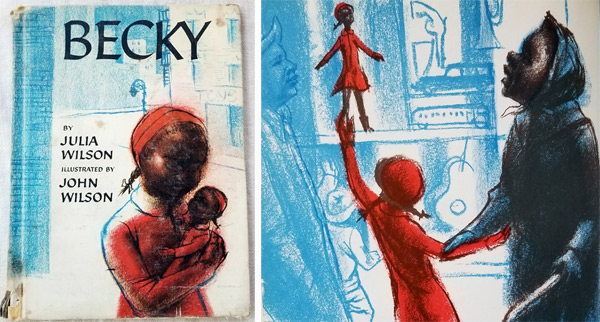
The cover showed a little brown girl in a red cap and red dress with a doll that matched her appearance. The book was titled “Becky,” written by Julia Wilson, illustrated by John Wilson and published in 1968. I knew the name John Wilson as an African American artist and wondered if this illustrator was that John Wilson.
I turned to a back page, and read the writer and illustrator’s bios. It “was” the artist John Wilson. Julia was his wife.
“Becky” tells the story of a little Black girl who with her mother searches several department stores for that “special doll” for her birthday. And she finds it: “A doll that looked just like Becky. They were almost twins.” Can her mother afford it, though?
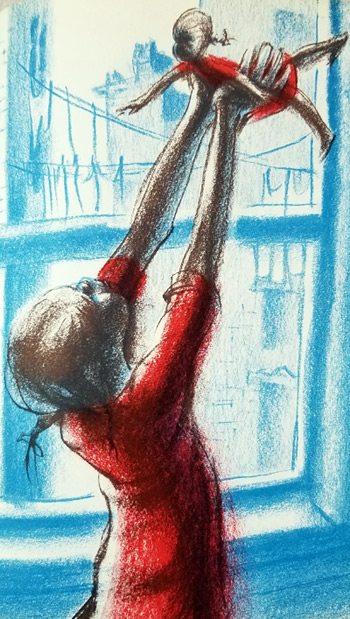
That was not the only children’s book I found that day with Wilson as illustrator. The other was a narrative of the life of Malcolm X, with his name serving as the title. The book was written by Arnold Adoff in 1970. Its hard-back cover was wrapped in plastic to protect the book. Therefore, it was in better condition.
I was happy to find the books to add to my collection of children’s books illustrated by African American artists, and others.
Both books were published during the era when African Americans began pronouncing themselves as “I’m Black and I’m Proud.” So this book fit right into that mindset and Wilson’s artistic focus.
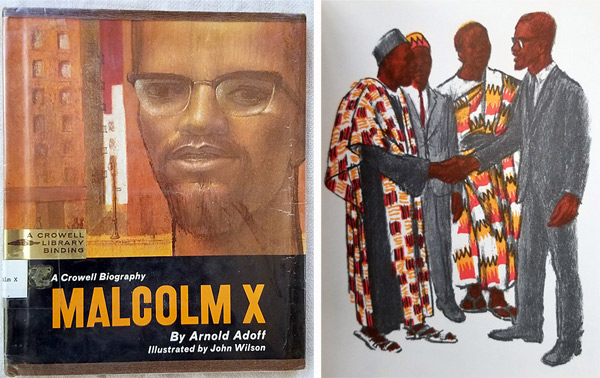
Finding these two books by Wilson with these two subjects was not surprising. Wilson was a social realist painter who felt that his mission was to portray African Americans as human beings at a time when society treated them as “other.”
He was a painter, sculptor and printmaker who was influenced by Jose Clemente Orozco, one of the famous three of Mexican muralists. They made art for the masses, the people who were oppressed by their government. In the 1950s, Wilson and his wife spent several years in Mexico on a fellowship where he learned and practiced printmaking. He also studied with New York printmaker Robert Blackburn at his shop, where many artists learned and worked the craft.
Wilson is perhaps best known for a 36-inch bronze bust of Dr. Martin Luther King Jr. in the rotunda of the U.S. Capitol Building in Washington.
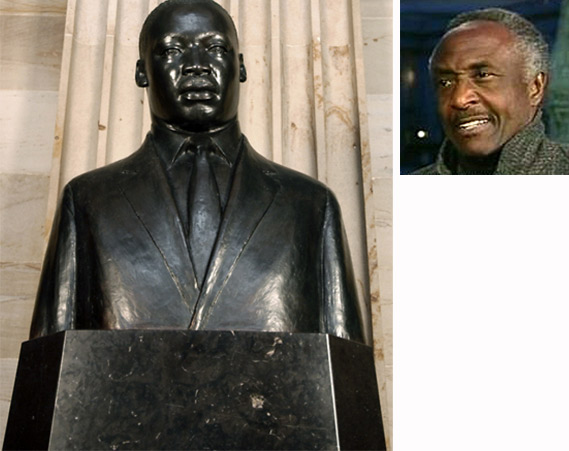
He was chosen to create the sculpture in a national competition in 1984, besting artists Elizabeth Catlett – known for her sculptures of Black females, her paintings and prints – and Zenos Frudakis – known for his bronze sculpture “Freedom,” which shows a figure breaking free. Wilson was paid $50,000 for the commission, which was completed in 1986.
He also made other bronze sculptures and giant heads of King in a similar contemplative pose. Another important work is a huge bronze head of King titled “Eternal Presence” at the Museum of the National Center of Afro-American Artists in Boston.
John Woodrow Wilson was born in 1922 in Roxbury, MA. As a teenager, he visited the Museum of Fine Arts in Boston, but never saw paintings of people who looked like him. This invisibility implied “that black people were not capable of being beautiful and true and precious,” he told a Boston Globe interviewer in 1995.
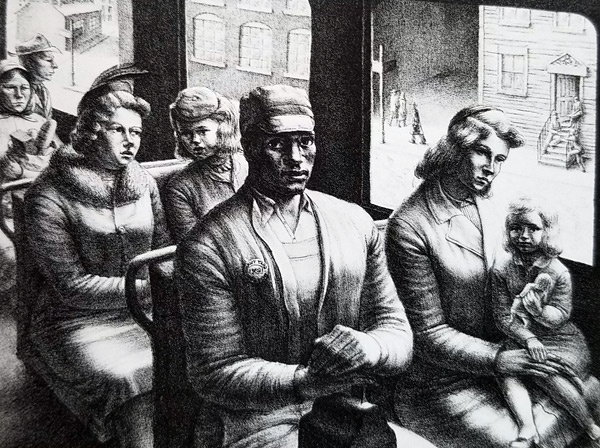
He grew up in a home with parents who came from British Guiana (now Guyana). His father regularly read Black newspapers, and in their pages, Wilson saw images of lynched Black men that would stay with him for the rest of his life.
In high school, Wilson participated in art classes and art activities. He received a scholarship to the School of the Museum of Fine Arts in Boston. He earned a bachelor’s degree in education from Tufts University in 1947. Then it was off to Paris on a traveling fellowship, then back home where he settled in New York and met Julia, a teacher.
Wilson spent five years in Mexico in the early 1950s – arriving there too late to meet Orozco, who had died, but experiencing the importance of murals to reach people who could not afford paintings or the price of museum admission. He was attending La Esmeralda, the country’s national art school, when he painted an anti-lynching mural titled “The Incident” in 1952.
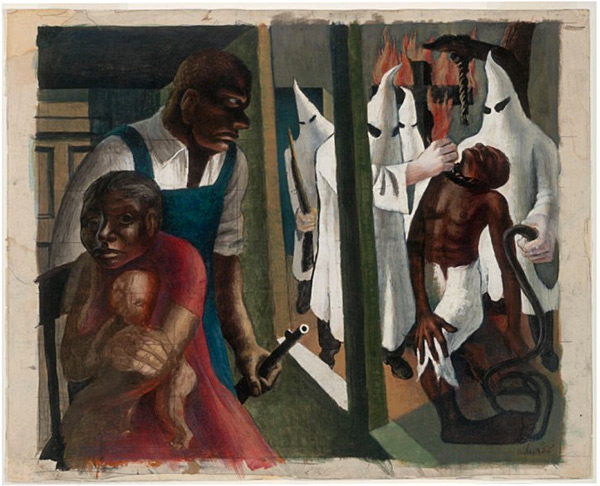
The mural captured one of those horrid “incidents” he had seen so often in Black newspapers as a child. It was eventually painted over. His studies and painted sketches for the mural, though, were featured in a traveling exhibit that began in 2019 and ends next year at the Yale University Art Gallery in New Haven, Conn.
“Above all, the kind of images that affected me as a young man were gotten from picking up a newspaper (mainly from the Black Press, the Pittsburgh Courier, or the Baltimore Afro American) and seeing pictures of black men, burnt, lynched, and tortured,” he said. “Once every two or three months there would be a lynching. Emotionally, I felt every one of these victims was me because white racists were out to subdue, dehumanize and kill black men, and ultimately, to intimidate the black community.”
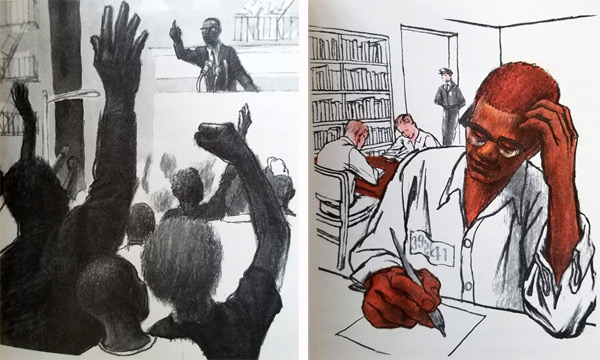
Wilson was in Mexico at the same time as Catlett who had come there on a fellowship in 1946 with her then-husband artist Charles White. She remained after he left. Catlett introduced Wilson to Taller Grafica Popular (TGP, or People’s Graphic Workshop), where they both made prints. She was another major influence, along with Mexican muralists David Alfaro Siqueiros and Diego Rivera.
Back in the United States, he taught at Boston University, retiring as a professor of art in 1986. He spent the last decades of his life in Brookline, MA, where he died in 2015.
One of Wilson’s sculptures shows a father reading to his son. He apparently created it first as a drawing in 1973 and a bronze in 1985. He illustrated another children’s book, titled “Striped Ice Cream,” written in 1968 by Joan M. Lexau. It also featured a Black girl and her birthday.
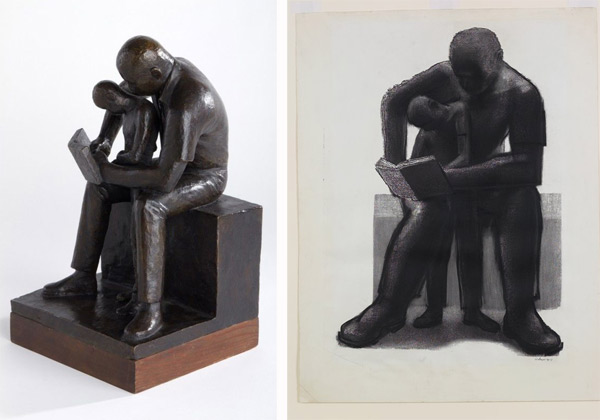

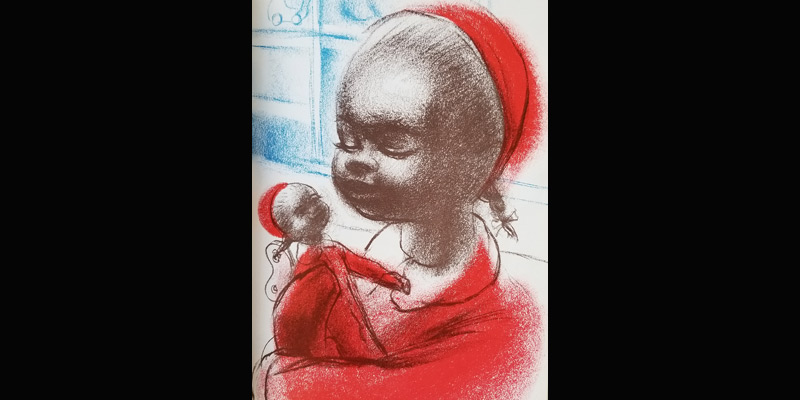
Hi Sherry , thank you so much for your reply and suggestion . Yes I am familiar with Faith Ringgold , Jerry Pinkney, Jacob Lawrence, and Romare Bearden, and the other artist you mentioned, I actually met Faith Ringgold once , I am a retired art teacher. Romare Bearden is one of my favorite artist, so thank you very much! You are a blessing!!
Thanks for the info
Very interesting books.
Thank you, Sherry, for introducing me to “Becky’s” illustrator. I have owned this book for several years. It’s part of my children’s book collection that features black dolls.
dbg
My pleasure. I was very happy to find this little book, even though it bears the signs of a being hugged a little too tight.
Is it no wonder why this book is so hard to find, this explains it . I have been looking for a copy to give to my granddaughter for Christmas, I am a retired lady and on a fixed income, so I have been looking on all of the discount and cheap book sites, with no luck. I guess the $32, dollars I saw on Amazon was A bargain , even though it was a used and marked in good condition. A few places didn’t even list as having it. Some places listed it well over $100. And one place listed it as being over $800. What is your recommendation on this? My granddaughter is becoming very interested in reading and is going into the second grade, I have bee buying books about black authors, illustrated by black artist for a long time, since before preschool.
Hi Helen, You should buy the book for $32 on Amazon. I see that it’s being sold at that price by several sellers, two of which say the book is in good or better condition (mine is in much-handled condition). If you buy it and it’s in bad condition, you can always return it. The book is likely out of print, so it will be difficult to find a new one unless you want to pay $800 for it. May I also suggest the beautifully illustrated books of African American illustrator Jerry Pinkney – if you’re not familiar with him. Other artists-illustrated books I have include ones by Jacob Lawrence, Faith Ringgold, Elizabeth Catlett, Romare Bearden, Basquiat..